Rome
Top-Rated Tourist Attractions in Rome
In a city so filled with icons of antiquity and the Christian faith, it's hard to know where to go first. Of course, your own interests will govern your choices, but there are certain sites that are almost obligatory landmarks of Italy and of all Europe, such as the Colosseum and the Pantheon. A word of caution: try to vary your experiences as you explore Rome, so that you don't visit too many ancient sites or churches in a row. And intersperse these more serious attractions with a few that are simply tourist icons - the Spanish Steps and that place all tourists must go to toss in their coin, the Trevi Fountain. Rome is so big that it can overwhelm, so even the most devoted sightseer should take some time to kick back and enjoy la dolce vita in a park or sidewalk café.
1 The Colosseum and the Arch of Constantine
As the Eiffel Tower is to Paris, the silhouette of the Flavian Amphitheatre is to Rome. The largest structure left to us by Roman antiquity, the Colosseum still provides the model for sports arenas - present day football stadium design is clearly based on this oval Roman plan. The building was begun by Vespasian in AD 72, and after his son Titus enlarged it by adding the fourth story, it was inaugurated in the year AD 80 with a series of splendid games. The Colosseum was large enough for theatrical performances, festivals, circuses, or games, which the Imperial Court and high officials watched from the lowest level, aristocratic Roman families on the second, the populace on the third and fourth.
Beside the Colosseum stands the almost equally familiar Arch of Constantine, a triumphal arch erected by the Senate to honor the emperor as "liberator of the city and bringer of peace" after his victory in the battle of the Milvian Bridge in 312. Lines are long and move slowly, so you can save time by joining the Skip the Line: Ancient Rome and Colosseum Half-Day Walking Tour and have a knowledgeable guide, as well.
- 2 Vatican City
The Vatican is the smallest independent state in the world, with an area of less than half a square kilometer, most of it enclosed by the Vatican walls. Inside are the Vatican palace and gardens, St. Peter's Basilica, and St. Peter's Square, an area ruled by the Pope, supreme head of the Roman Catholic Church. This compact space offers much for tourists to see, between its museums and the great basilica itself.
Inside St. Peter's Basilica is Michelangelo's masterpiece, Pieta, along with statuary and altars by Bernini and others. The unquestioned highlight of the Vatican museums is the Sistine Chapel, whose magnificent frescoed ceiling is Michelangelo's most famous work. Inside the Vatican Palace are the Raphael Rooms, the Borgia Apartments, the Vatican Library, and a number of museums that include the Picture Gallery, Museum of Secular Art, Etruscan Museum, and others. The collections you can see in these cover everything from papal coaches to 20th-century art reflecting religious themes.
Ticket lines for the Vatican's top attractions are incredibly long, and you can spend several hours waiting in line. To save time, purchase a Skip the Line: Vatican Museums with St. Peter's, Sistine Chapel, and Small-Group Upgrade tour in advance. This three-hour tour allows you to bypass the long lines and walk straight into the museums with a knowledgeable guide. Headsets are provided, and you can choose from several different departure times or upgrade to an evening or small-group tour.
- 3 The Pantheon
The Pantheon - the best preserved monument of Roman antiquity - is remarkably intact for its 2000 years. This is despite the fact that Pope Gregory III removed the gilded bronze roof tiles, and Pope Urban VIII ordered its bronze roof stripped and melted down to cast the canopy over the altar in St. Peter's and cannons for Castel Sant'Angelo. The Pantheon was rebuilt after damage by fire in AD 80, and the resulting brickwork shows the extraordinarily high technical mastery of Roman builders. Its 43-meter dome, the supreme achievement of Roman interior architecture, hangs suspended without visible supports - these are well hidden inside the walls - and its nine-meter central opening is the building's only light source. The harmonious effect of the interior is a result of its proportions: the height is the same as the diameter. Although the first Christian emperors forbade using this pagan temple for worship, in 609 Pope Boniface IV dedicated it to the Virgin and all the Christian martyrs, and since then, it has become the burial place of Italian kings (Victor Emmanuel II is in the second niche on the right) and other famous Italians, including the painter Raphael.
- 4 Roman Forum
Walking through the forum, now in the middle of a throbbing modern city, is like stepping back two millennia into the heart of ancient Rome. Although what survives of this center of Roman life and government shows only a small fraction of its original splendor, the standing and fallen columns, its triumphal arches, and remains of its walls still impress, especially when you consider that for centuries, the history of the Forum was the history of the Roman Empire and of the western world. Roman political and religious life was centered here, along with the courts, markets, and meeting places. After the seventh century, the buildings fell into ruin, and churches and fortresses were built amid the ancient remains. Its stones were quarried for other buildings and it was not until the 18th and 19th centuries that systematic excavations brought the ancient buildings to light from under a 10-meter layer of earth and rubble. Highlights not to miss are the Temple of Antoninus Pius, the Temple of Castor and Pollux, the Temple of Saturn, the Arch of Septimus Severus, the Curia, the Temple of Vesta, and the Arch of Titus.
- 5 Trevi Fountain
One of the city's most popular tourist attractions, this 17th-century masterpiece has been immortalized in films until it is almost a required visit. Throwing a coin (not three) into the Trevi Fountain (Fontana di Trevi) is a tradition that is supposed to assure your return to Rome. Rome's largest fountain, Fontana di Trevi is supplied by an aqueduct originally constructed by Agrippa, the great art patron of the first century BC, to bring water to his baths. The fountain was created for Pope Clement XII between 1732 and 1751 by Nicolò Salvi, and built against the rear wall of the palace of the Dukes of Poli. It depicts the sea god Oceanus (Neptune), with horses, tritons, and shells. The water swirls around the figures and the artificial rocks, and collects in a large basin, always filled with coins.
6 San Giovanni in Laterano (Basilica of St. John Lateran)
As you might expect for the episcopal church of the Pope, St. John Lateran is one of Rome's most impressive churches. After centuries of alterations, it still retains its original form from the age of Constantine, when it was built. Its façade, by contrast, is a purely baroque embellishment and a fine example of that period. Along with the mosaics in the apse, be sure to notice the beautiful 16th-century wooden ceiling. If the octagonal baptistery, San Giovanni in Fonte, looks a bit familiar, it's because it provided the model for later ones throughout Europe. Built by Constantine, it is the world's oldest Christian baptistery. Across the piazza, in the church of the Scala Santa, is the Holy Staircase, 28 steps believed to have been brought to Rome in the fourth century by St. Helen, from Pilate's palace in Jerusalem.
7 Centro Storico & the Spanish Steps
Take a look at a Rome tourist map, and you'll see one area so filled with things to do that it's hard to read the street names. This is the Centro Storico, the historic center of Rome, with so many art-filled churches, resplendent palaces, and lively squares that you could spend your whole vacation strolling its ancient streets and lanes. Spend some time just to absorb the neighborhood's atmosphere instead of going from one of its must-see sights to the next. Along with Piazza Navona, the Trevi Fountain, and the Basilica of Santa Maria Maggiore, stop in less well-known churches, such as Santa Maria del Popolo, where you'll find works by Bernini and Caravaggio.
Pause at the Spanish Steps, the flight of irregular stairs and landings that lead up to the French church of Trinità dei Monti. The stairs take their name from Piazza di Spagna, the plaza at their base and one of Rome's most typical squares. The stairs have been a favorite haunt of tourists, where they can sit and enjoy a gelato in the summer or warm their hands around cones of hot roasted chestnuts in the winter. The boat-shaped fountain at the foot of the Spanish Steps is known as the Barcaccia and was created by Pietro Bernini, father of the great Baroque architect Gian Lorenzo Bernini. Via Condotti, leading southwest from Piazza di Spagna, is Rome's most fashionable shopping street, where the Caffè Greco is famous for the artists, writers, and musicians who have frequented it.
8 Santa Maria Maggiore
One of Rome's most majestic churches, Santa Maria Maggiore has stood here since the fourth-century Pope Liberius had a vision of the Virgin directing him to build a church where snow fell the following day. Although it was August, snow did fall on the Esquiline hill the next morning, so here the great basilica was built. Mass has been celebrated here every day since the fifth century. The three aisles of its 86-meter-long interior are separated by 40 columns of marble and four of granite, and the apse added in the 13th century is lined with mosaics of Old and New Testament themes, masterpieces of Rome's famous mosaic artists.
Rome's oldest mosaics, as old as the fourth century, decorate the upper walls, and the floor is inlaid with colored stone in the style of the expert 12th-century artisans of the Lake Como region. The first gold to reach Italy from the Americas shines on the coffered ceiling. Two popes are buried here; it's one of Rome's four papal basilicas, an important place of pilgrimage church.
9 The Catacombs and Via Appia Antica (Appian Way)
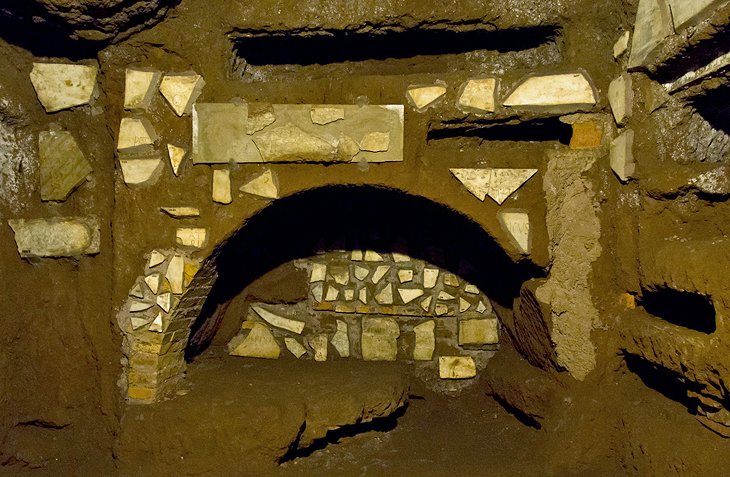
The Catacombs of San Callisto (St. Calixtus) and San Sebastiano, both underground burial places in the Via Appia Antica, are extensive - San Callista fills an area of 300 by 400 meters -- with intricate multi-layered networks of passages and chambers carved into the soft tufa. In addition to the tombs, St. Calixtus has six sacramental chapels, constructed between 290 and 310, with both pagan and early Christian wall paintings. In the Papal Crypt are the tombs of most of the martyred Popes of the third century identified by Greek inscriptions. San Sebastiano, one of Rome's seven pilgrimage churches, was built in the fourth century on the site of old cemeteries and catacombs that, along with the foundations of a Constantinian basilica, can be explored. Tomb chambers are on several levels with fine paintings, stucco decoration, and inscriptions dating to the first century AD. Although venerated remains are thought to have been brought here for safekeeping during persecutions, these were cemeteries, not hiding places for Christians.
A little west of the Via Appia Antica, not far from the catacombs of San Callisto, the
Catacombs of Domitilla are the largest and among the most impressive in Rome, with 15 kilometers of underground chambers and passages and a complete subterranean basilica. Dedicated to the martyred saints entombed there, Nereus and Achilleus, the basilica was a major pilgrimage destination until the Middle Ages. More than 80 painted tombs and a second-century fresco of The Last Supper survive in its galleries.
Outside the Porta San Sebastiano, the Arch of Drusus is near the beginning of the Via Appia Antica, one of the oldest and most important of the Roman highways, built around 300 BC and extended to the port of Brindisi about 190 BC. Running parallel with the road are the ruins of some of the aqueducts that supplied the city with water, and among the cypresses along its sides are remains of tombs belonging to aristocratic Roman families. The most prominent of these is the first-century tomb of Caecilia Metella and her husband.
10 Piazza Navona
One of Rome's most characteristic Baroque squares, Piazza Navona still has the outline of the Roman stadium built here by Emperor Domitian. It was still used for festivals and horse races during the Middle Ages, and was rebuilt in the Baroque style by Borromini, who also designed the magnificent series of palaces and the church of Sant'Agnese, on its west side. Its facade, campanile, and dome highlight the way Baroque architecture weaves convex and concave surfaces, gables, windows, columns, and piers into a unified design. In the crypt of Sant'Agnese are Alessandro Algardi's 1653 The Miracle of St. Agnes and the remains of a Roman mosaic floor. Sant'Agnese provided a model for Baroque and Rococo churches in Italy and elsewhere.
Although Borromini designed the square and its surrounding facades, it was his archrival, Bernini, who created its centerpiece, the beautiful Baroque fountain, Fontana dei Fiumi. The spirited fountain represents the four rivers then thought to be the largest on each of the known continents, with figures personifying the Nile, Ganges, Danube, and Rio de la Plata around the large basin, each accompanied by plants and animals of their respective regions. The two other fountains in the square are the 16th-century Fontana del Moro in front of the Palazzo Pamphili, erected by Giacomo della Porta, and the 19th-century Fontana del Nettuno with its figure of Neptune. Today, the square is filled with Romans, tourists, street artists, souvenir kiosks, cafés, and during December, one of Rome's best Christmas markets. Nearby, between the Piazza and the Pantheon, the church of San Luigi dei Francesi contains three major paintings by Caravaggio from the late 16th century.
11 Palatine Hill
Strategically set 50 meters above the Tiber, the Palatine Hill shows evidence of Rome's earliest settlement: rock-cuttings found in front of the Temple of Cybele show human activity as long ago as the ninth century BC. Later, this was the site chosen by the emperors and great aristocratic families for their palaces. The Farnese Gardens were laid out on the hill in the 16th century for Cardinal Alessandro Farnese, a pleasure park of terraces, pavilions, lawns, flowerbeds, trees, and fountains designed as a kind of stage-setting for social gatherings. Highlights of the Palatine Hill are the House of Livia (Augustus' wife), the semi-subterranean Cryptoporticus, Domus Flavia, Domus Augustana, and most imposing of all, the Baths of Septimius Severus. The Palatine Hill is a lovely place to explore, combining a park with magnificent and impressive ruins of ancient Rome.
- 12 Borghese Gallery and Gardens
One of Rome's largest parks, the Borghese Gardens contain a number of attractions that include two museums, the most prominent of which is the Villa Borghese. Built as a party villa and to house the Borghese art collection, the gallery contains paintings, sculptures, mosaics, and reliefs, most from the 15th to the 18th century, and include works by Raphael, Titian, Caravaggio, and Rubens. Elsewhere in the park, Villa Giulia was built as a summer residence for the 16th-century Pope Julius III and houses the Etruscan Museum. More villas are from the world exposition that was held in Rome in 1911.
The park is an English-style landscape garden, with walking paths and ponds where you can rent row boats. You can also rent bikes or a surrey to explore the park. There is a good zoo, Bioparco di Roma, with naturalized enclosures and a miniature trail connecting its various sections. A number of its attractions will appeal to children, including playgrounds, weekend pony rides, and occasional puppet shows.
13 Baths of Caracalla
Completed by Caracalla in 216, these were much more than public baths. They were a complete sports center, with hot and cold baths, a swimming pool, dry and steam saunas, gymnastics and sports facilities, social rooms, gardens, libraries, hairdressers, and shops. The massive and imposing structure covered an area of 300 square meters, a complex of gigantic halls whose domes and vaulting were supported by huge columns and piers. It could accommodate 1,500 people at a time. The floors and walls were covered with marbles, mosaics, and frescoes; even in ruin their splendor is still evident.
14 Terme di Diocleziano (Baths of Diocletian National Museum)
Diocletian's baths were so enormous that today, they contain two churches, large parts of a Carthusian monastery and a major museum. Michelangelo used the vast tepidarium (hot baths) as the shell for his church of Santa Maria degli Angeli, and the Museo Nazionale Romano, Rome's National Museum, fills another section with treasures of antiquity: Greek and Roman sculpture, pre-Christian and later sarcophagi, and beautiful mosaics and frescoes. The late-16th-century church of San Bernardo alle Terme was built in a rotunda at the corner of the baths; its dome is like that of the Pantheon, but only half its size.
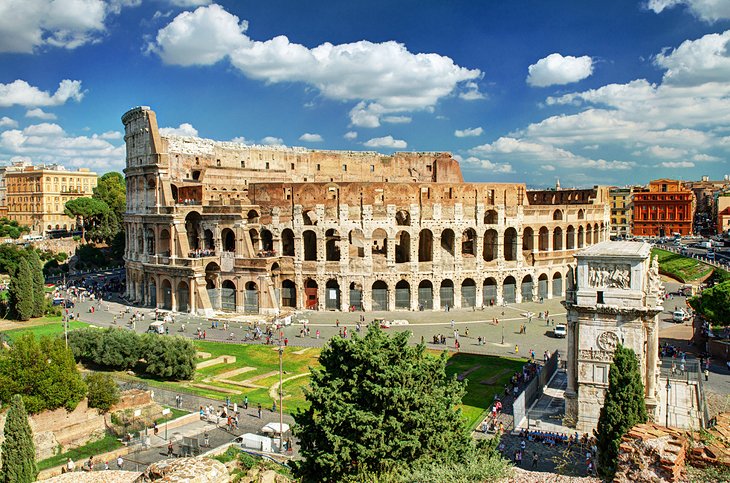
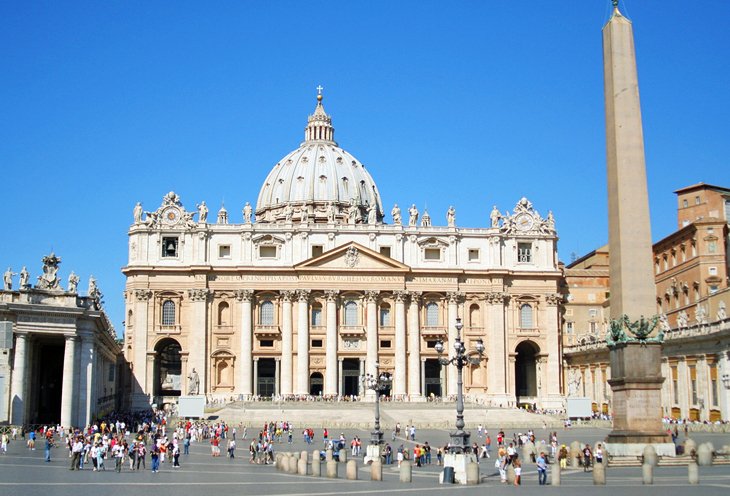
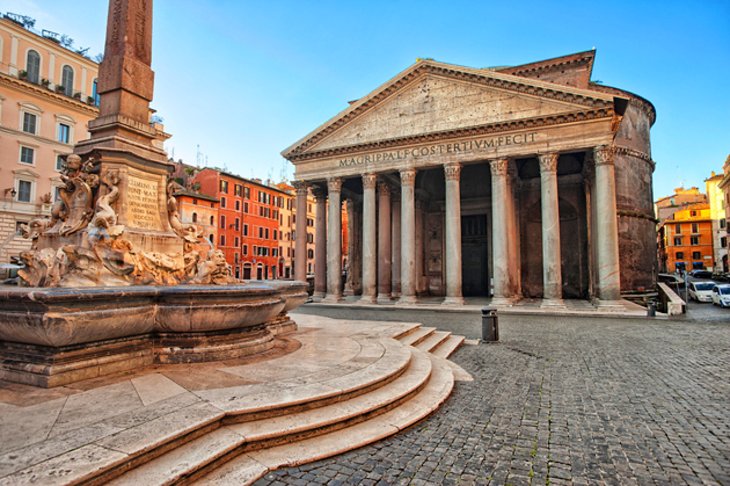
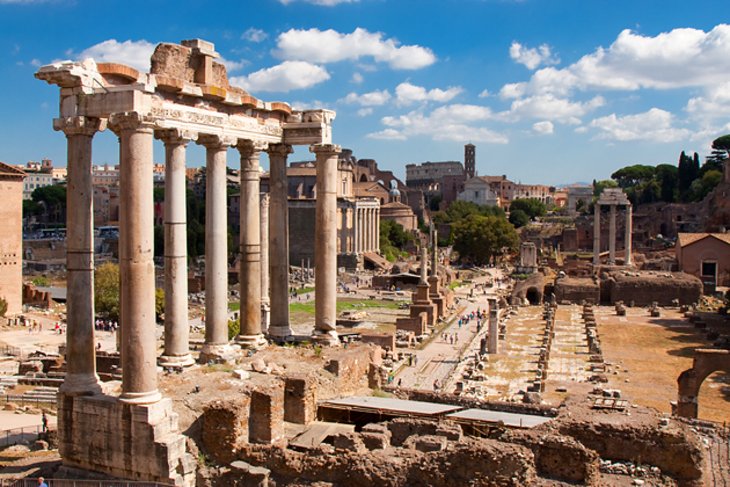
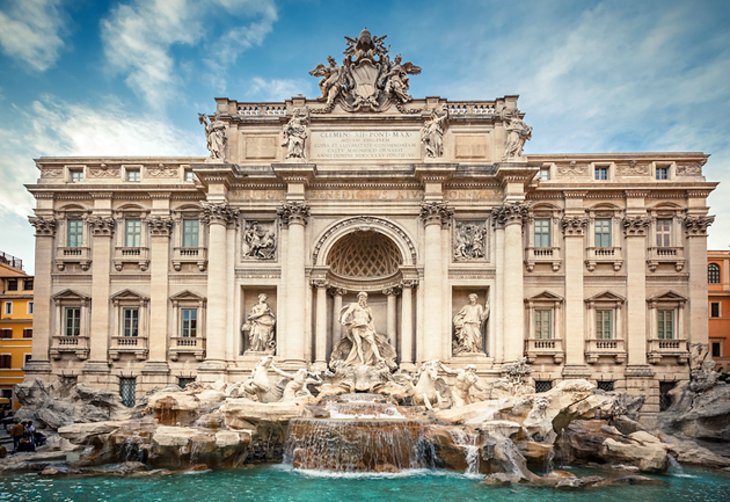
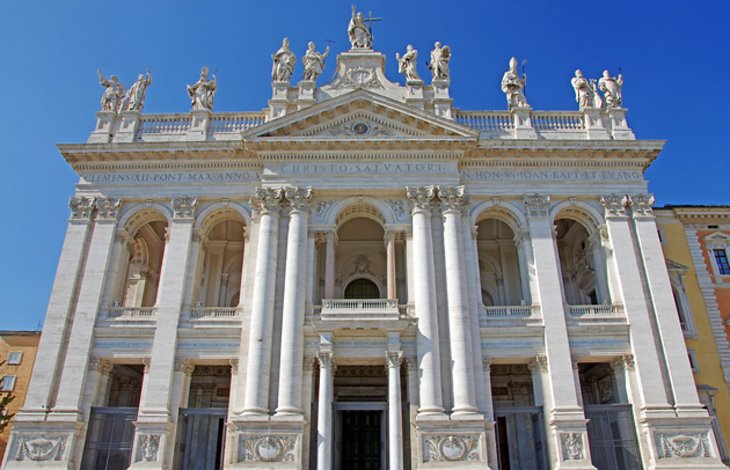
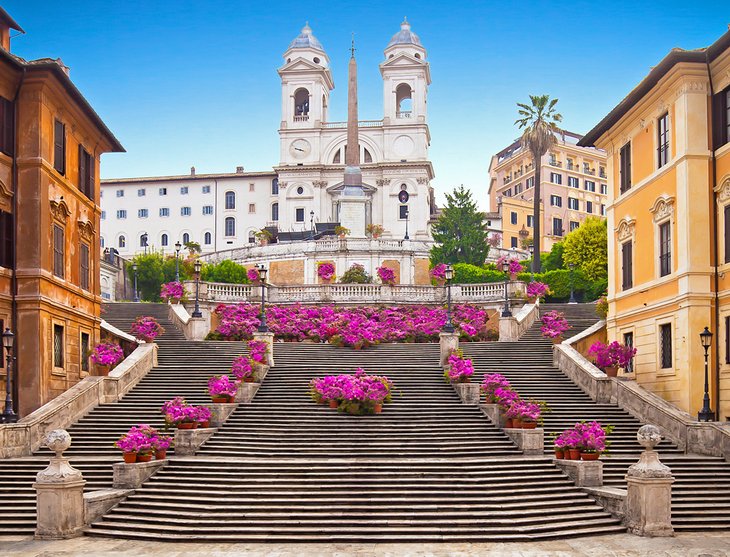
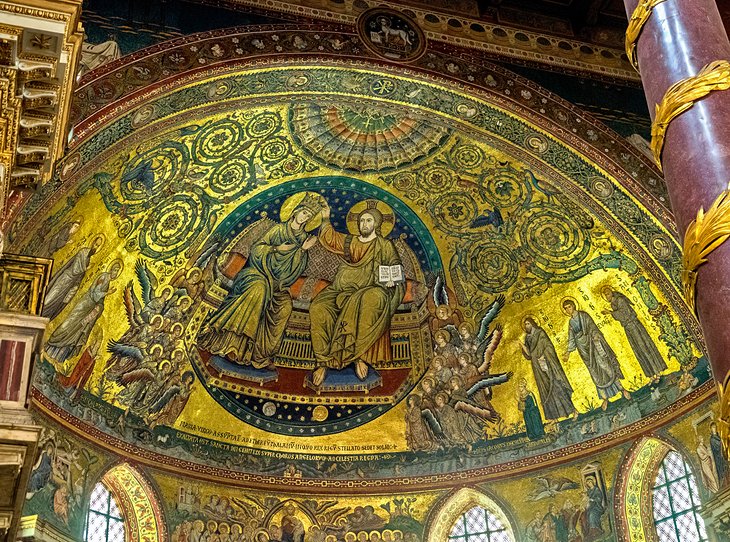
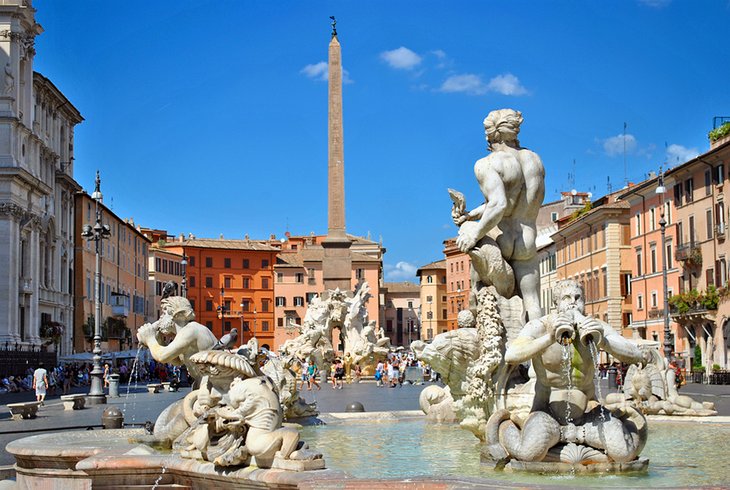
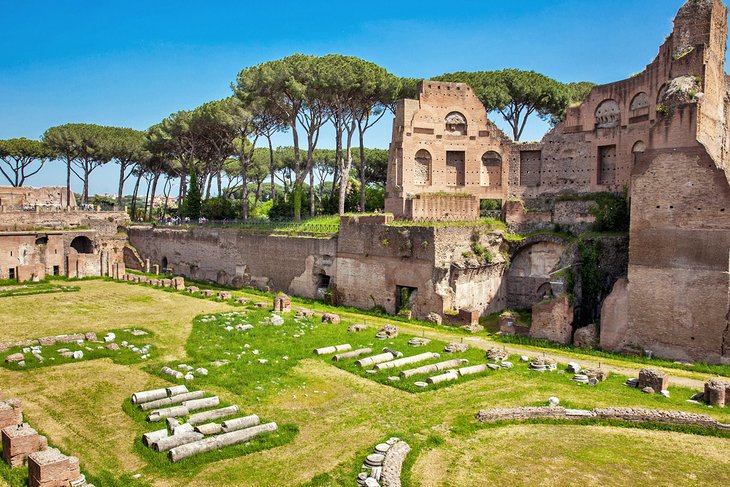
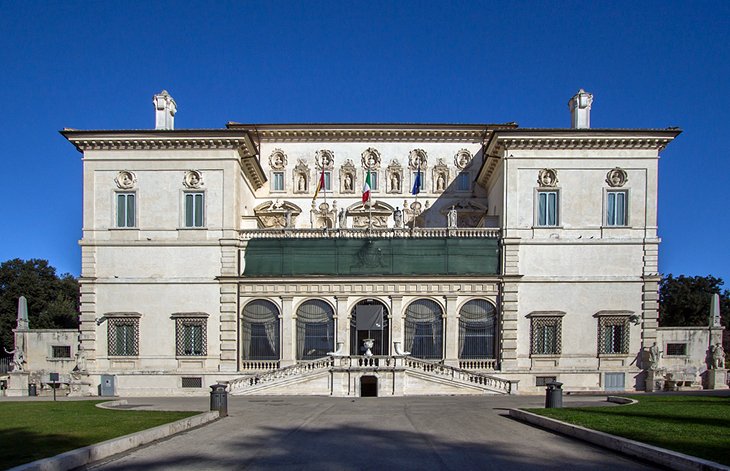
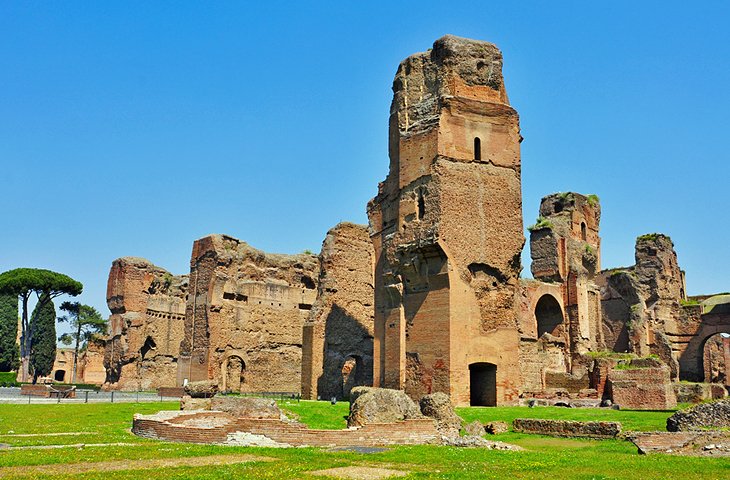
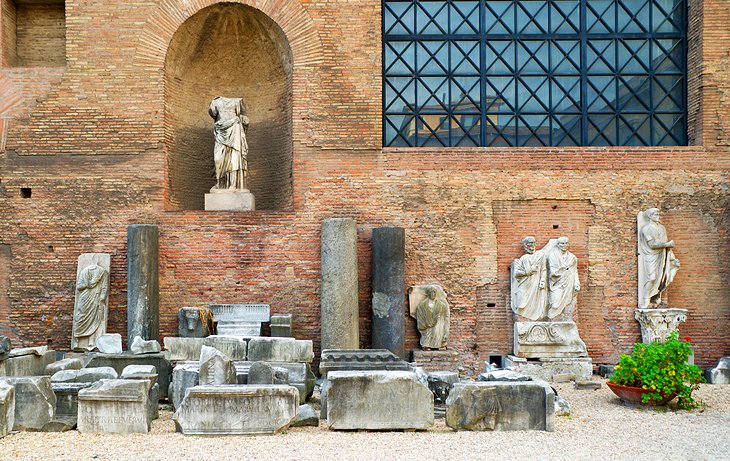
Comments
Post a Comment